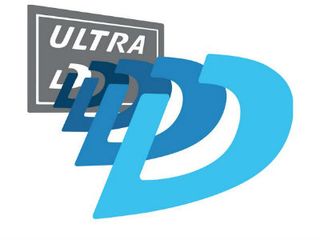CES: Stream TV Networks Touts Glasses-Free 3DTV

Las Vegas – International CES -- The 3D-TV market was a dud in part because many sets required pesky and expensive glasses and because there was a relative dearth of content available in the format.
One company that aims to reverse 3D-TV's fortunes is Stream TV Networks, a Philadelphia-based firm founded in 2009 that has developed a proprietary glasses-free 3D platform that has progressed to the point that it can fit on Qualcomm-made Snapdragon chips that can be embedded into televisions.
Stream TV Networks touted its progress here on Monday, announcing the completion of its systems-on-chip (SoC) and an array of technology partners, including a handful of TV makers. Combined, those elements that make its platform, dubbed “Ultra-D,” ready for commercial rollout, Mathu Rajan, Stream TV’s CEO, said.
Stream TV Networks, which has previously demonstrated its technology running on separate conversion boxes, said its glasses-free approach can work on high-definition sets, but notes that the extra pixels that 4K brings to the table allows it to create more depth and separation of the images and render more impressive 3D effects. The company claims that its Ultra-D conversion process allows consumers to watch 3D images at different viewing angles, rather than a small “sweet spot,” and isn’t saddled with the headaches and motion sickness that some consumers get when viewing 3DTV with glasses.
On the partnership front, Stream TV Networks has agreements in place with companies such as Hisense, PDC (a joint venture of Panasonic, NTT Docomo and Mitsubishi), Skyworth, Konka, and Cello Electronics, a TV maker that currently focuses on the European market but is looking to expand into North America.
The Stream TV Networks platform can convert 2D to 3D, but it is also starting to urge content owners and distributors to develop native content – including live TV and post-produced video -- for the glasses-free platform. It’s starting discussion with unnamed content owners and content creators, sports leagues, cable channels, and pay-TV providers, according to Bud Robertson, the company’s vice president of business development.
IZON, a company that has handled 2D-to-3D conversions of movie titles such as Gulliver’s Travels, Hoodwinked Too!, and The Chronicles of Narnia: The Voyage of the Dawn Treader, signed on last year to release Ultra-D-enabled products in collaboration with Stream TV.
Multichannel Newsletter
The smarter way to stay on top of the multichannel video marketplace. Sign up below.
Stream TV Networks will also be looking to work with cable operators and other pay-TV distributors. While delivering content in Stream TV’s glasses-free format does cost some extra bandwidth (the company estimates that it requires an extra 8% to 10% in bandwidth headroom), cable operators won’t be required to carve out bandwidth for separate 3D channels in order to take advantage of the company’s technology, Rajan said.
Still, cable operators and other pay-TV distributors will likely want to see a market with TVs outfitted with Stream TV’s technology develop before they justify freeing up the relatively small bandwidth headroom required for the new glasses-free format.
Other target markets for Stream TV Networks’ approach include digital signage and games. Stream TV has already developed a software development kit for games.
